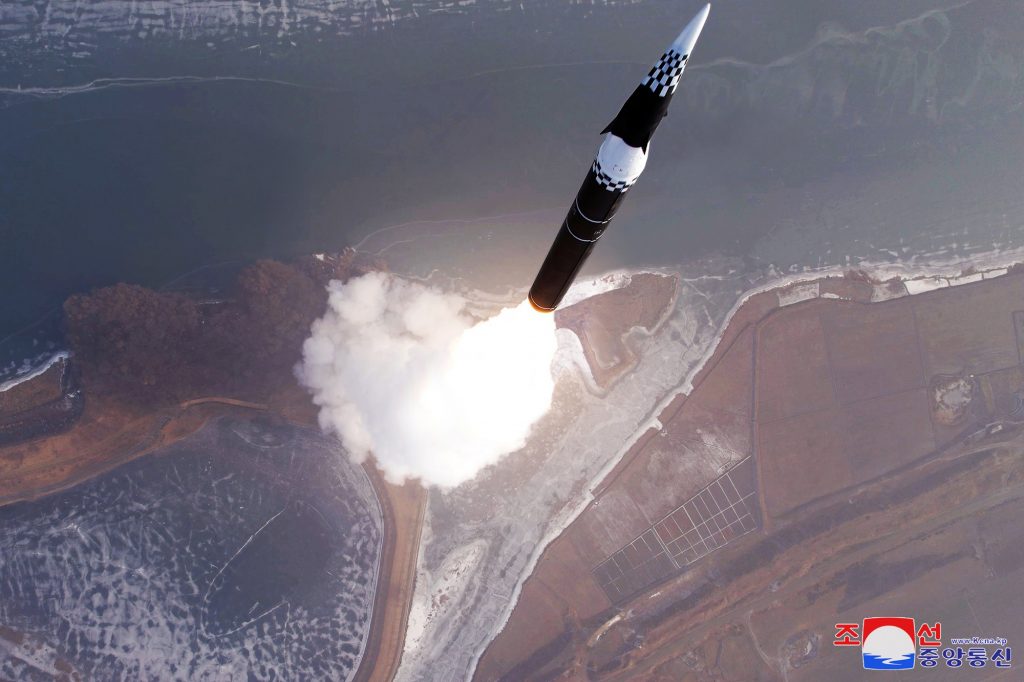North Korea confirmed Tuesday that it successfully tested a new intermediate-range hypersonic ballistic missile (IRBM) launched the day before.
The missile’s hypersonic glide vehicle reportedly reached two peaks during its flight — 99.8 kilometers (62 miles) and 42.5 kilometers in altitude — and traveled approximately 1,500 kilometers at speeds exceeding 12 times the speed of sound, according to the Korea Central News Agency (KCNA). It struck its intended target in the East Sea.
The announcement follows South Korea’s Joint Chiefs of Staff (JCS) assessment that the missile was initially believed to have a range of 3,000 to 5,500 kilometers. However, during Monday’s test, it traveled a shorter distance of 1,100 kilometers before landing in the East Sea — a calculated move to temper the missile’s impact while showcasing its capability to strike targets like Guam, a critical U.S. military base.

North Korean leader Kim Jong-un observed the test remotely via a monitoring system. General Jang Chang-ha, director of the Missile Administration, and key officials from the defense science institute were present at the launch site.
State media highlighted the use of advanced materials and technologies, including a “new compound of carbon fiber” for the engine body and an upgraded flight and guidance control system.
“The current test-fire proved without doubt that we are actively developing such powerful new-type weapon systems as intermediate-range hypersonic ballistic missiles to cope with different security threats posed by hostile forces at present,” Kim said, according to the English-language KCNA report. “A few countries in the world might possess such weapon systems.”
Kim framed the test as a “self-defense” measure, asserting that the missile posed “no negative effect” on neighboring countries.
BY SEO JI-EUN [seo.jieun1@joongang.co.kr]





